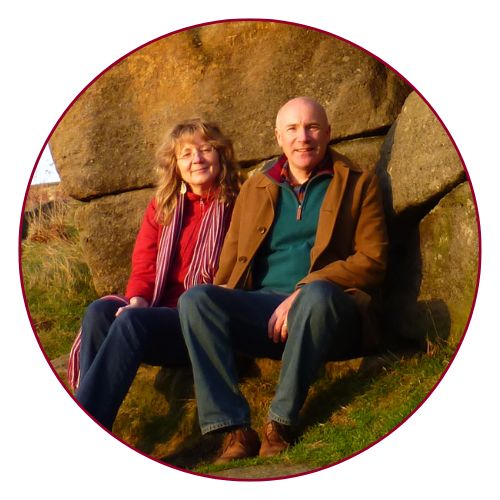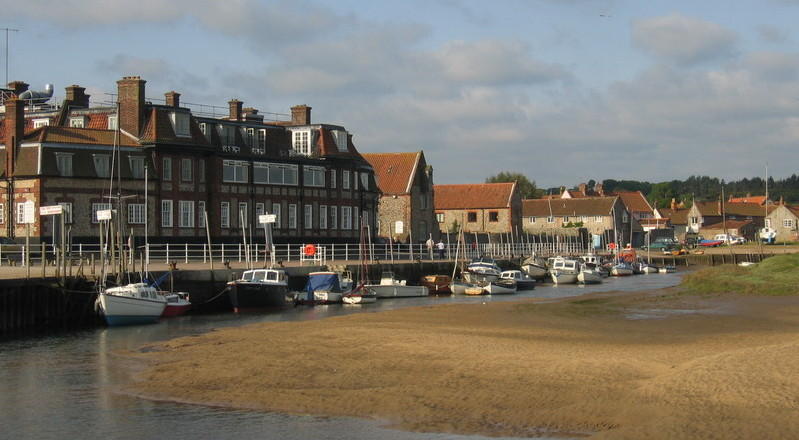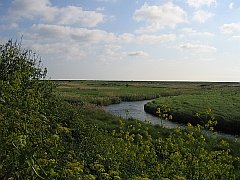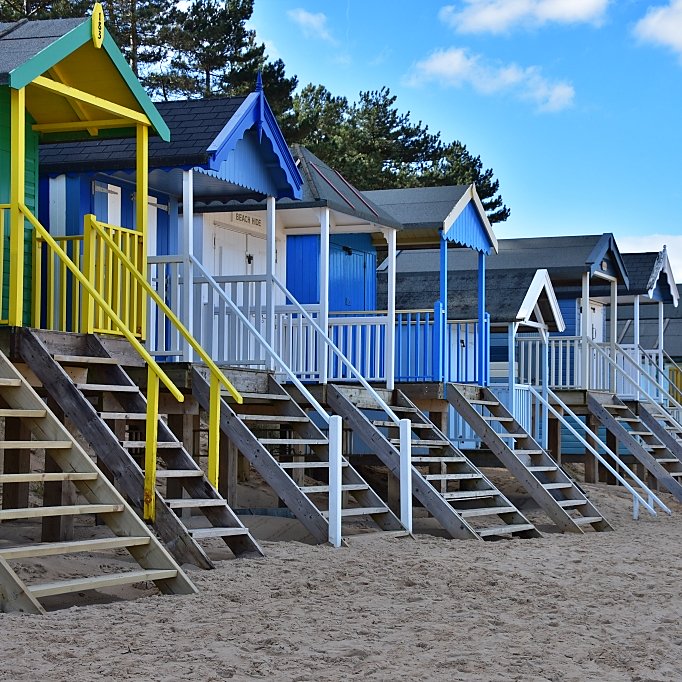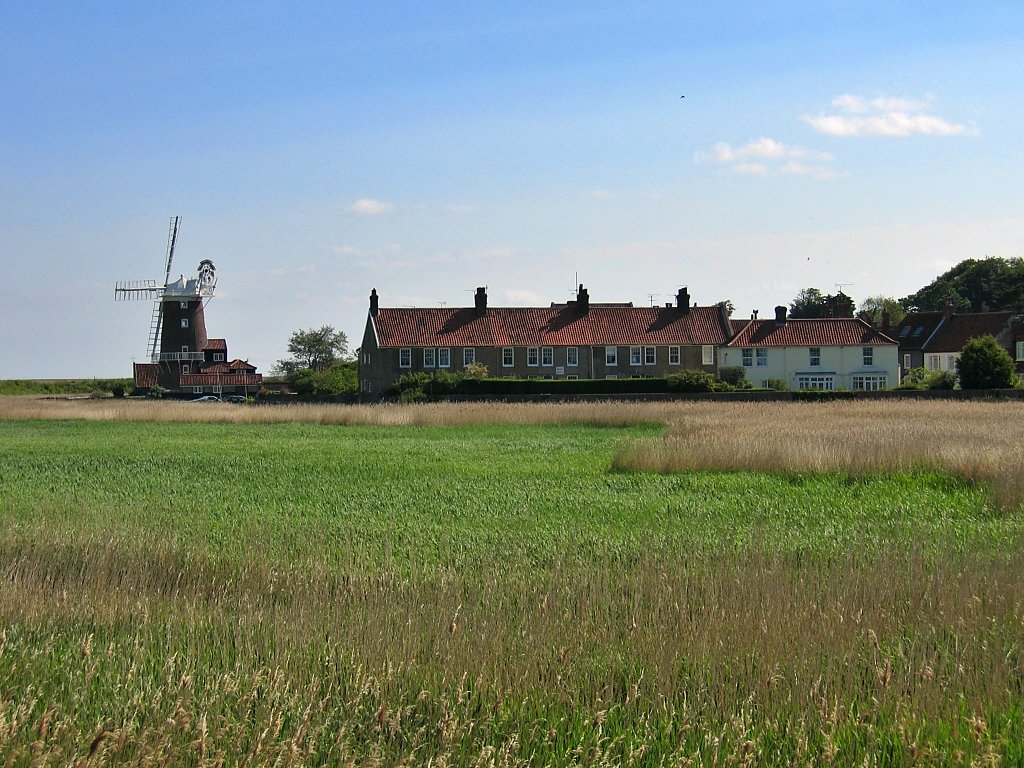Norfolk
Endless Skies on the Edge of England
Norfolk's is a landscape of big skies, long beaches and endless vistas and many English have fond memories of spending their holidays along the county's North Sea coast or simply messing about on the water in the Broads. In this flat landscape, land and sea blend into one another and the end product is an area made for relaxation.
Be it lazing on the beach, exploring the narrow lanes by bike, walking the coastal path, bird watching, piloting a boat through the Broads or shopping and people watching - this county has something for everyone.
But Norfolk has become a holiday destination only fairly recently.
For much of its long history the county was better known for trade and commerce. At the hub of a trading network connecting England with Europe Norwich - the county's capital - was once the second richest city in England.
Norwich's grand cathedral and many beautiful buildings in Norwich, King's Lynn and across the county still speak of that time. So do the fortresses built to ensure that all that wealth ended in just the right coffers. The great keep of Norwich Castle, begun just after the Norman Conquest, shows clearly how important William the Conqueror thought that city.
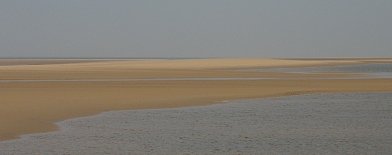 Land and sea blend on a Norfolk beach © essentially-england.com
Land and sea blend on a Norfolk beach © essentially-england.comLater came grand houses and even grander estates. Holkham, Felbrigg, Houghton, Blickling, and Oxburgh grant us a glimpse into a statelier past.
Yet the greatest legacy of the county's wealth and industry is not made from stone. In search of fuel the citizens of the medieval towns and villages cut peat on such a scale that they created England's largest wetland - the Norfolk Broads.
So whether it's long beaches you're after, or tranquil reedbeds teeming with birds, or windmills, castles or excellent shopping - this could be the place for you. Just check it out.
Travel Tips
Transport links from central and southern England are excellent, even though this county is one of the few in England without a motorway. Getting around is easy, as is finding somewhere to stay. Holiday accommodation is plentiful and varied, from tiny, lovingly restored fishermen's cottages to luxury hotels to boats and barges. Caravan and camping enthusiasts are also well catered for, particularly along the coast. Check out
- Holiday cottages in Norfolk
- Norfolk Hotels
- Bed and Breakfasts and Guesthouses in Norfolk
- Boating Holidays
And this county is justly regarded for the quality and freshness of its seafood and vegetables. So it's not difficult for pubs and restaurants to turn out seriously good food.
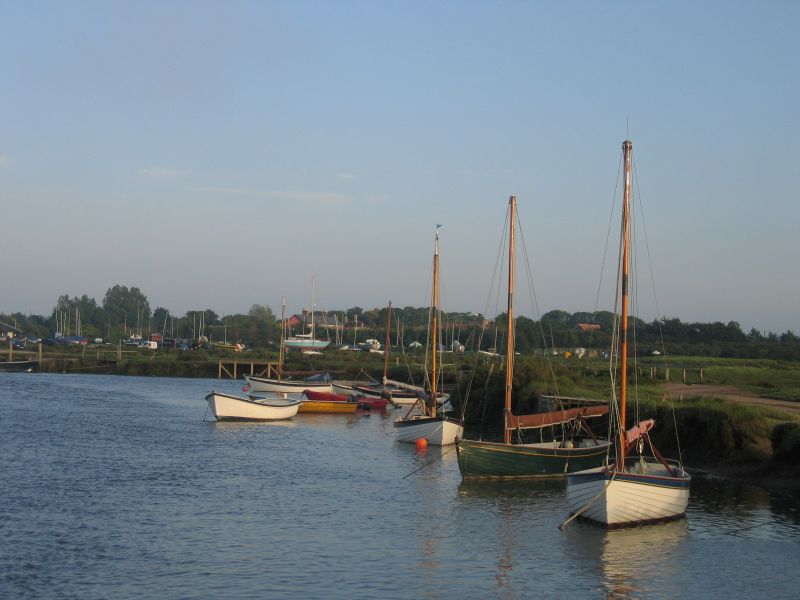 The Norfolk Broads © essentially-england.com
The Norfolk Broads © essentially-england.comNorfolk History
Signs of human habitation in this part of the country reach back 700,000 years, but to my mind it's Norfolk's medieval history that's the most amazing. Can you think of another place on these islands where you could conceivably dig up the English crown jewels while building sand castles on the beach?
Prehistoric Norfolk
Ancient peoples lived by the coast as we do today, but since sea levels were much lower back then, most of the oldest archaeological sites in East Anglia lie beneath the North Sea. The few that have survived inland are worth exploring. 700,000 year old flint tools have been found on a site near Happisburgh. Salthouse, in the north-east of the county, is the location of a causewayed enclosure and Grimes Graves, close to the border with Suffolk was one of only a few flint mines operating in England during Neolithic times.
Roman Norfolk
East Anglia is most famous for the revolt that Boudica and her tribe of Iceni staged against the Roman invaders. But if anything, this lost revolt opened the county to Roman settlers, who built roads - such as the Peddar's Way - constructed ports and forts to guard the coast and even established vineyards. Evidence of their settlements can still be found near Burnham Market, Caister-on-Sea and Burgh Castle or you can visit the reconstructed Iceni village at Cockley Cley to get an idea what life was like here during Roman times.
Anglo-Saxon Norfolk
After the Roman retreat the Saxons arrived and settled in the area. Christianity was established with the religious centre of the region first at North Elmham and later at Thetford. And while East Anglia was initially one of the seven kingdoms of England, it soon came under the control of Northumbria, Mercia and finally Wessex, growing in population and prosperity until it was England's most densely populated area. Viking raids in the 9th century lead to the death and martyrdom in 870 of Edmund, the King of East Anglia.
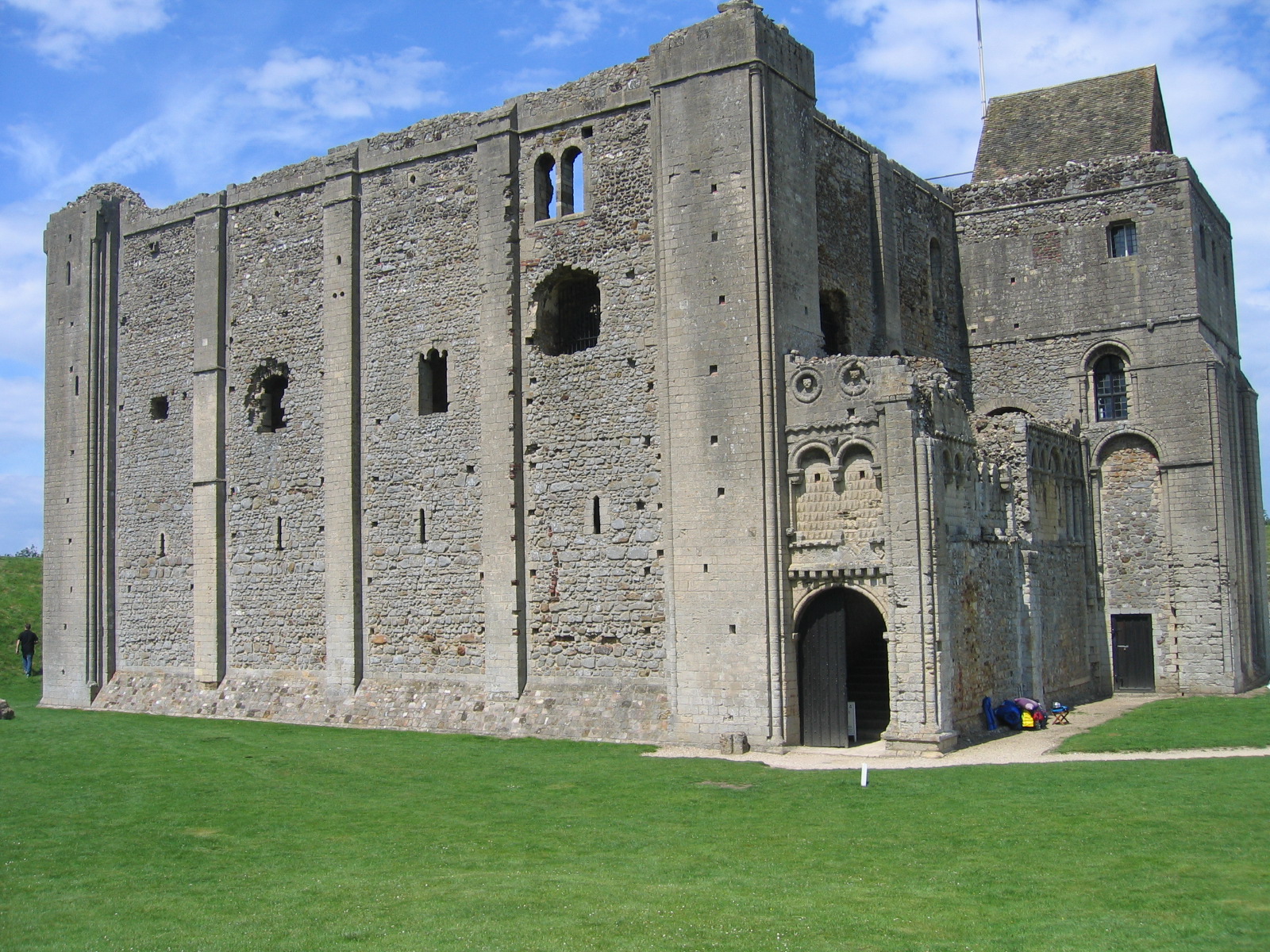 Castle Rising's Norman Keep © essentially-england.com
Castle Rising's Norman Keep © essentially-england.com
Norman Norfolk
Rich and populous, William the Conqueror highly regarded the area and immediately moved to establish military control. About 30 castles were built after the conquest, the best preserved being the stone keeps at Norwich and Castle Rising, and the wonderful motte and bailey fortress of the Warennes at Castle Acre, controlling the Peddar's Way and the Nar Valley.
Medieval Norfolk
Wool, trade and agriculture made the county rich during medieval times. But people were also deeply pious. Norwich's great cathedral was built over 50 years, and monasteries were established at Binham and Castle Acre. The shrine of Our Lady in Walsingham was second only to Thomas Becket's shrine in Canterbury cathedral as a centre for medieval pilgrims and attracted visitors from all over Europe. Every English king from Richard the Lionheart to Henry VIII made this pilgrimage. But for me, medieval Norfolk's greatest mystery is the location of the crown jewels that King John lost along with most of his treasury in 1216 while crossing the Wash.
Regency Norfolk
By the 17th century much of the county's wealth had declined along with its population, but land was still of great value and magnificent country houses were built throughout the county.
- Raynham Hall was started in 1621
- Blickling Hall - the birthplace of Anne Boleyn - is the county's greatest Tudor style mansion
- and Holkham Hall, built 1734-61, was designed along classical lines
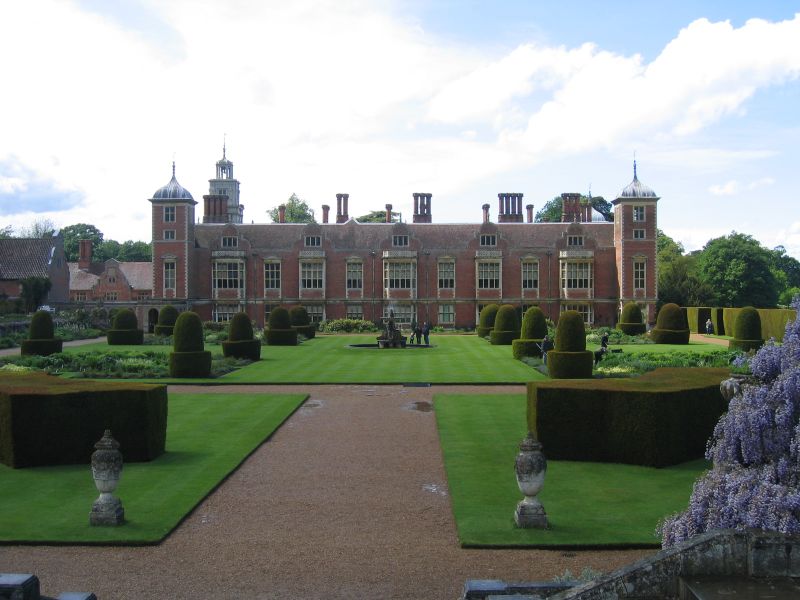 Blickling Hall © essentially-england.com
Blickling Hall © essentially-england.com
Modern Norfolk
Later centuries saw the coming of the railways and the beginnings of tourism with towns like Cromer and Hunstanton growing into popular coastal resorts. The Broads were discovered by boating and bird enthusiasts. Old railways such as the Poppy Line were restored. And throughout Norwich and King's Lynn - the county's busiest cities - continued to thrive.
Towns and Villages
Here you'll find portraits of Norfolk places. It matters little if they're large or small, busy or quiet. If they have something to offer the visitor, we'll seek them out.
- Norwich, once the second richest town in England still makes a good day out and Norwich Castle is now a fascinating museum
- Wells-next-the-Sea has great fish 'n' chips and the opportunity to start a number of different walks.
- King's Lynn is a busy port and gateway to the Wash. Start here if you're hunting for England's lost crown jewels.
- Great Yarmouth is known to holiday makers as the gateway to the Broads
- Blakeney, once a thriving medieval port, now welcomes bird watchers and sailors as does
- The village of Cley-next-the-Sea with its famous windmill and Nature Reserve.
- Burnham Market is known for its galleries and fashion shops
- While the small village of Burnham Thorpe is the birth place of Admiral Lord Nelson, hero of Trafalgar.
- The village of Castle Acre can even boast two historical sites worth exploring: the remains of William de Warenne's Motte and Bailey castle and the wonderfully decorated Cluniac Priory.
- And the Victorian resort of Cromer is these days famous for its tasty crabs and lovely pier and theatre.
- Visit Sheringham by steam train and walk up on the cliffs for great sea views.
- Explore the wonderful coastal resort of Hunstanton using our Hunstanton discovery trails which find all the interesting little bits tucked away in this lovely town.
- During Norman times Thetford was so important that it had two castles. Follow our trail around this historic town.
Norfolk Attractions
Beloved of holiday makers, the county's long sandy beaches are a must see. So is the expanse of the Broads. Regardless if you love rowing, sailing or bird-watching, a holiday in the Norfolk Broads may be exactly what you're looking for. Shopping is excellent in Norwich, King's Lynn and bijou seaside places like Burnham Market. Numerous great houses may tempt you with their art collections and if you love landscape gardens you'll find much to take pleasure from, such as Sheringham Park, Sandringham or Holkham.
Here are some of the lovely things we have done in Norfolk:
- If you love exploring Norman castles, why not have a look at Castle Rising
- How about walking from Cley to Blakeney Point to do some bird and/or seal watching
- Or a more gentle stroll between Blakeney and Morston using the Norfolk Coast Path.
- Take a picnic and sit among the peaceful ruins of Baconsthorpe Castle.
- Visit Sheringham by steam train and walk up on the cliffs for great sea views.
- Stand in front of the parish church of St. Mary and Holy Cross in Binham and wish the west end window could be brought back to life, and then wander the stunning ruins of Binham Priory.
- Take a gentle stroll around Stiffkey and explore its peaceful salt marsh and beach.
- Enjoy the magnificent Holkham Hall and estate, one of the best stately homes in Norfolk.
- Explore the romantic ruin of Weeting Castle near Thetford.
- Walk from Sheringham Park landscaped gardens to the sea and back. There are great views and a chance to see steam trains.
- Go to see Creake Abbey and learn of its sad demise.
- Try our favourite Norfolk cycle ride from Blakeney.
- Climb down into one of the flint mines at Grimes Graves.
- Discover military sites along the Norfolk coast including the Stiffkey Whirlygig.
- Visit moated Oxburgh Hall.
- Discover a Tank in the Forest and pay your respects at the Desert Rats Memorial in Thetford Forest.
For more inspiration, have a read of our Things to do in Norfolk page...
If you're after a quick break, or new to Norfolk and want to get a taster, then we have some lovely ideas for short breaks in Norfolk. Have a read and I'm sure you'll be tempted.
Find out about other English counties!
Return from Norfolk to the Essentially England homepage.
